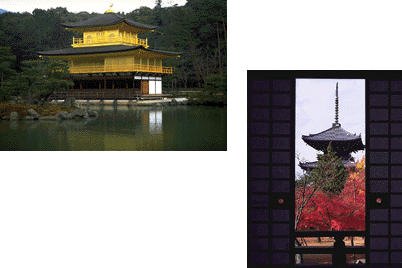

The city of Kyoto is the capital of the prefecture with the same name. It has a population of 1,464,000. It was the home of the imperial court between 794 and 1868, during which time it was also the nation's capital.
Back in 794, when the capital was first moved to Kyoto, the city was called Heiankyo. It was modeled after Chang'an (now called Xi'an), the capital of China's Tang dynasty.
It prospered as the nation's political, economic, and cultural center for many centuries, and it attracted most of the leading poets, tea masters, flower artists, and craftsmen of the day.
The capital was transferred to Tokyo in 1868, but Kyoto continued to prosper as a center of artistic and economic activities. And today, it is still considered one of the most culturally important cities of Japan. Among the notable handicrafts that developed in this city are Nishijin textiles, Yuzen dyeing, and the making of pottery, lacquer ware, and folding fans.
Kyoto is part of the Hanshin industrial zone and has many electrical and chemical plants.
There are also nearly 2,000 Buddhist temples and Shinto shrines. A number of them have been registered on the list of the World Cultural and Natural Heritage of the United Nations Educational, Scientific, and Cultural Organization (UNESCO).
Photos by Kenzo Yokoyama.